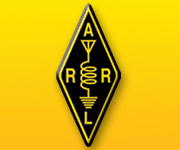Outcome for 5 MHz at WRC-15 Remains in Limbo
With the deadline to submit proposals to World Radiocommunication Conference 2015 (WRC-15) now less than 2 months away, it’s still unclear how at least one agenda item of importance to the Amateur Radio community will fare. That is agenda item 1.4, which calls on the delegates to consider a secondary Amateur Radio allocation at 5 MHz (60 meters). In the US and in most other countries that grant privileges there, ham radio has a set of fixed channels at 5 MHz — not necessarily the same from one country to the next, although most are common.
As ARRL Chief Technology Officer Brennan Price, N4QX, explained last spring following the second Conference Preparatory Meeting (CPM), the agenda item 1.4 proposals at the CPM were “all over the map — ranging from no change to an expansive allocation of 5275-5450 kHz, with explicit suggestions of 15 kHz and 100 kHz in between, and a few methods with details to be filled in later.” As Price summarized at the time, “[T]here is a wide divergence of opinion, and no certainty as to the outcome.”
In his July 2015 report to International Amateur Radio Union Region 3 Conference to be held this October in Indonesia, ARRL CEO David Sumner, K1ZZ, said that while the US is “generally supportive” of the Amateur Radio and Amateur-Satellite services at WRCs and in other International Telecommunication Union (ITU) venues, “it has been difficult to gain support from the federal government side for agenda item 1.4.” The ARRL is a member of IARU Region 3 to represent the interests of FCC-licensed radio amateurs residing in Guam; the Northern Marianas; American Samoa; Baker, Howland, Jarvis, and Wake islands; Palmyra Atoll, and Kingman Reef.
When he submitted the report to IARU R3 in July, Sumner had said that the best ARRL could hope for in the US position was a 25 kHz secondary allocation at 5 MHz, “and only then if this becomes the CITEL Inter-American Proposal (IAP),” he explained. CITEL completed its work earlier this month and will put forward an IAP for a 175 kHz secondary allocation at 5275-5450 kHz, with support by up to a dozen countries. That’s not a proposal the US or Canada could support, however. Sumner noted that as of now, only one formal proposal for agenda item 1.4 has been submitted, and it calls for no change at 5250-5450 kHz. It came from the Regional Commonwealth in the Field of Communications (RCC), the regional telecommunications organization made up primarily of the former Commonwealth of Independent States countries of which Russia is the largest.
Other regional telecommunication organizations still have not submitted formal proposals. Sumner said this week that it’s not possible to predict what might happen at the European Conference of Postal and Telecommunications Administrations (CEPT) meeting in a few weeks. CEPT is the umbrella organization for 48 European nations.
“We appreciate the strong support from so many Latin American and Caribbean administrations and remain hopeful that a favorable consensus can be reached in Geneva in November,” Sumner said.
In Europe, Hungary’s telecommunications regulator NMHH has begun issuing temporary permits to radio amateurs there to operate in the band 5350-5450 MHz on a secondary basis for research. The permits are valid for 3 months, and holders may reapply after that. According to the Dutch Amateur Radio Association (VERON), telecommunication regulator Agentschap Telecom is expected in September to release 5350-5450 kHz to radio amateurs on a secondary basis for all operating modes. The primary users of the band, which include the Netherlands military, already have agreed to the allocation. Several other European countries already have 60 meter allocations.
WRC-15 will take place November 2-27 in Geneva.
Back





